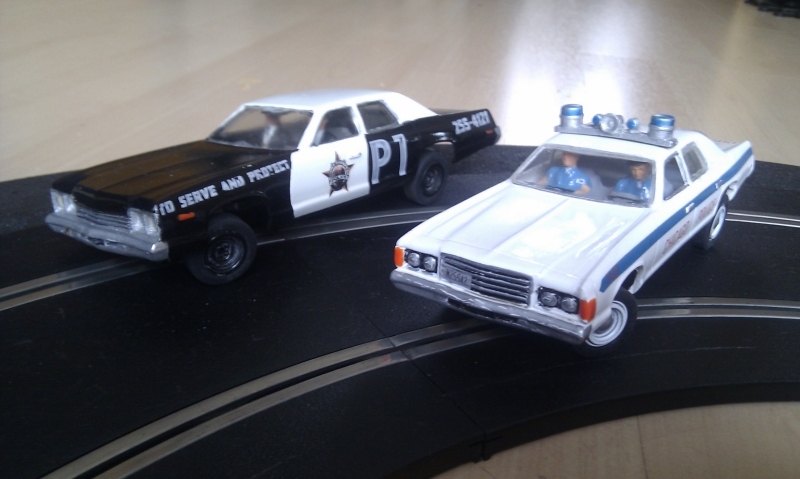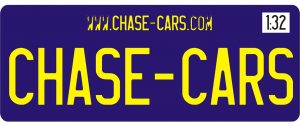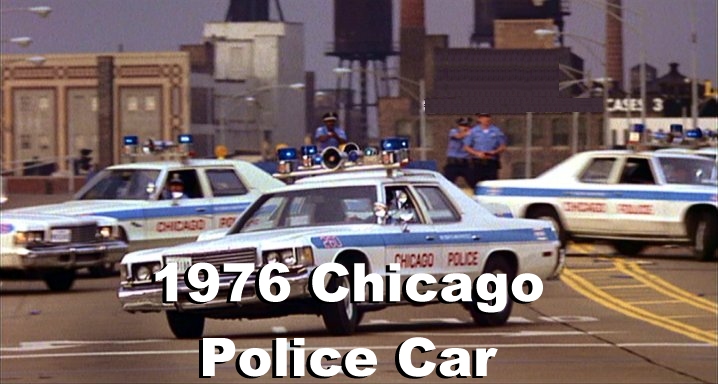
“Use of any unnecessary violence in the apprehension of the Blues Brothers… has been approved.”
And about a hundred other lines that you can probably quote back to your friends, even though you haven’t seen the film for 20 years. What are you going to use to catch a car that’s got a cop motor, a 440 cubic inch plant, it’s got cop tires, cop suspensions, cop shocks. It’s a model made before catalytic converters so it’ll run good on regular gas?
You need one of these, or probably around 60 of them.
The 1:32 resin bodyshell is cast from a 2 part mould with body mounts already fitted, and the windows are much thinner and easier to cut out than with my older bodyshells.
In the kit you get
- Resin bodyshell
- Vacform windows
- Vacform interior
- Resin driver’s head
- Resin wheel centres
- Waterslide graphics set
Bodyshell preparation is here, detail follows below.
Trial fit the windows to check for size. Don’t get the front pillars too narrow, and remember it’s easier to remove material than add it!
As always with resin parts, wash them in soapy water to get rid of any mould release agents, then leave them them to dry. Choose your favourite primer and get to it!
For a white police car, use white primer. I use 3 coats of white primer, sanding lightly with 1200 or 1500 grit between each coat, then 3 coats of white gloss paint on top. Keep the paint thin and turn the bodyshell around so you get paint cover everywhere.
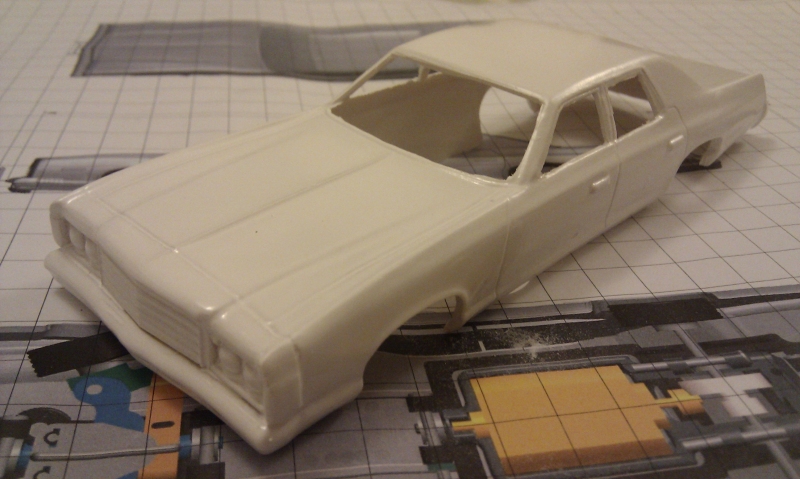
Then brush some matt black paint into the headlight surrounds and the radiator grille. Don’t worry about getting it too neat, you’ll paint over it with silver later.
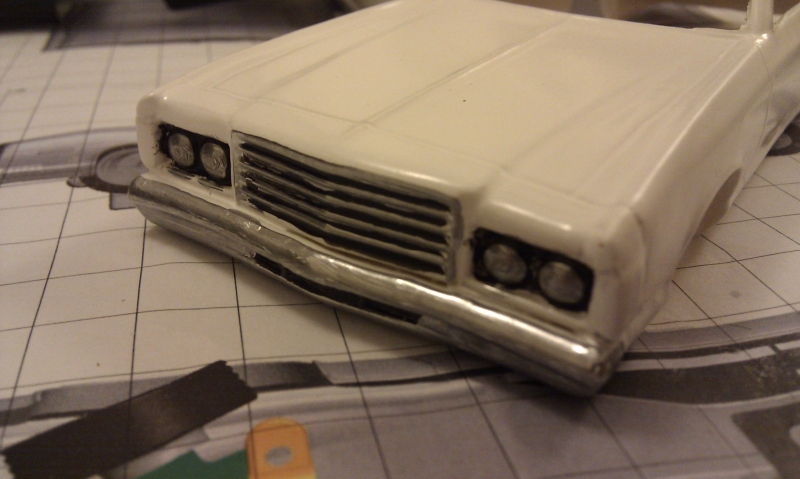
I use an Edding silver paint pen which I find is easier than a brush, it also gives a good approximation to chrome paint. Do the rear, the door handles and the window surrounds too.
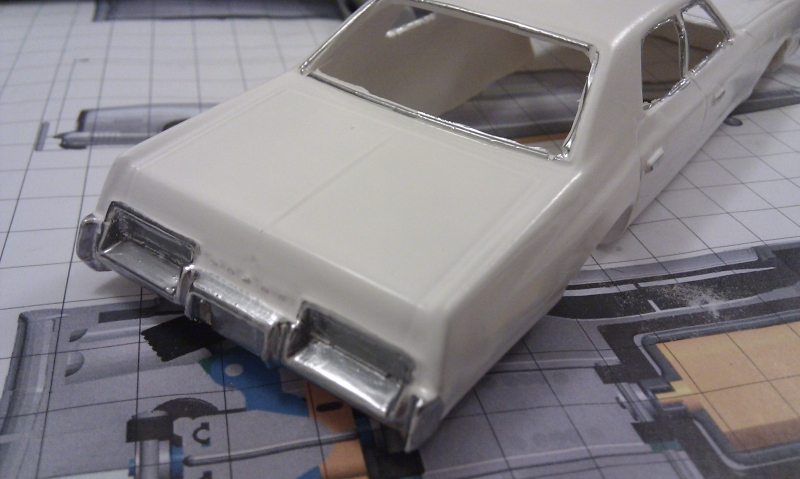
Orange for the side marker lights and red for the rear lights.
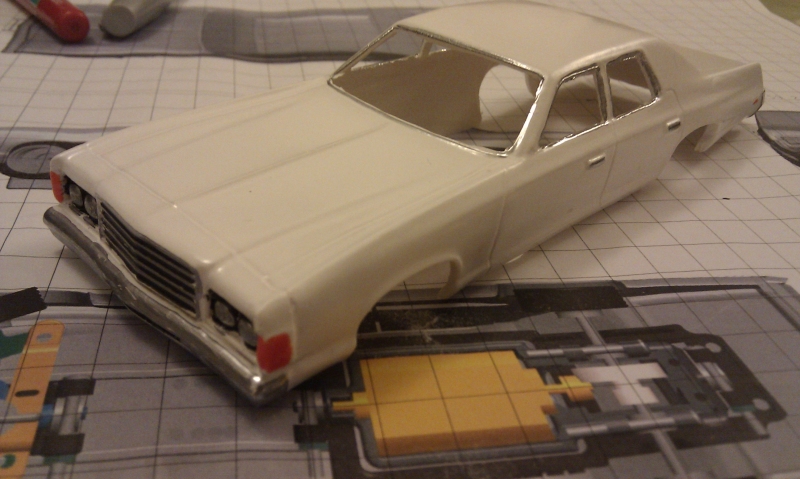
Once all the paint is dry you can do the graphics.
The decals have already been coated with one thin coat of a water based acrylic to help protect them whilst they are applied, however they are very thin and can tear easily. The clear film is continuous and so each decal must be cut carefully from the sheet. Cut with a sharp scissors, craft knife or scalpel but leave a small clear margin around each decal. This will help to prevent any potential solvent ingress when the decals are coated with clear lacquer and will reduce the chance of any ink flaking off.
Cut out the small rectangles which fit over the door handles, then cut closely around the side stripes.
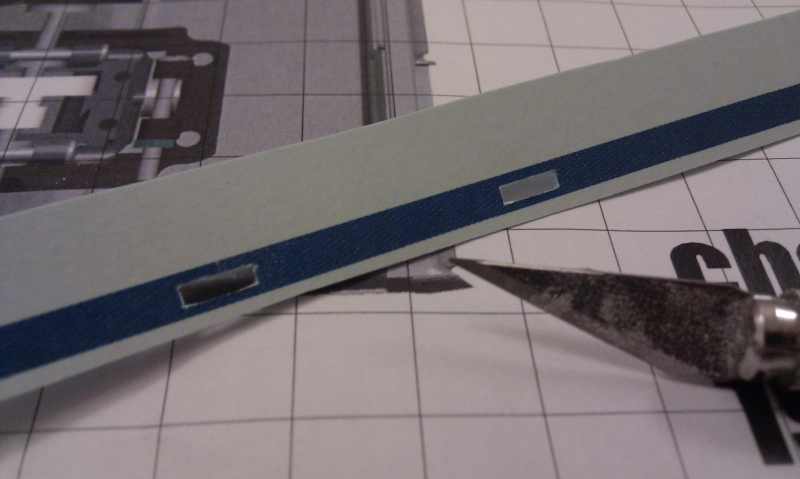
The decals should be dipped into warm water for 20 seconds and should not be allowed to float off the backing paper in the water. Shake off any loose water, then within 30 seconds, slide into position on the model. These long stripes are quite difficult, but take your time and you’ll be able to get them straight.
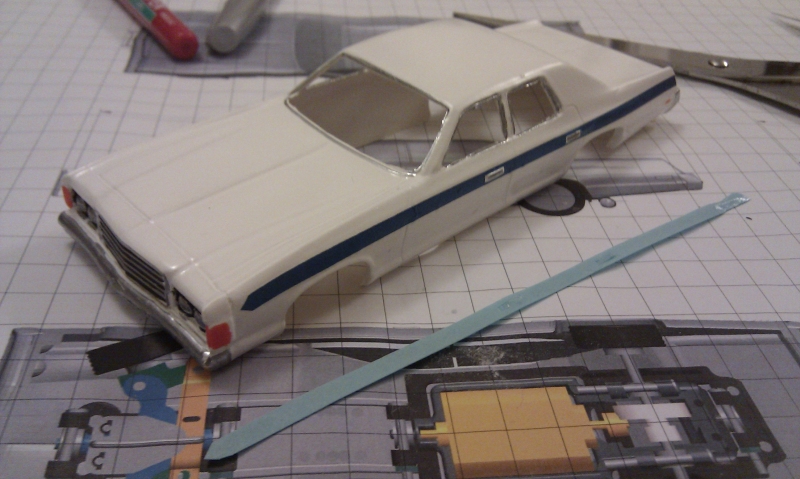
Follow on with the other graphics, choose the number of your Police car and use it on the stripes and the rear. There are two different licence plates to choose from.
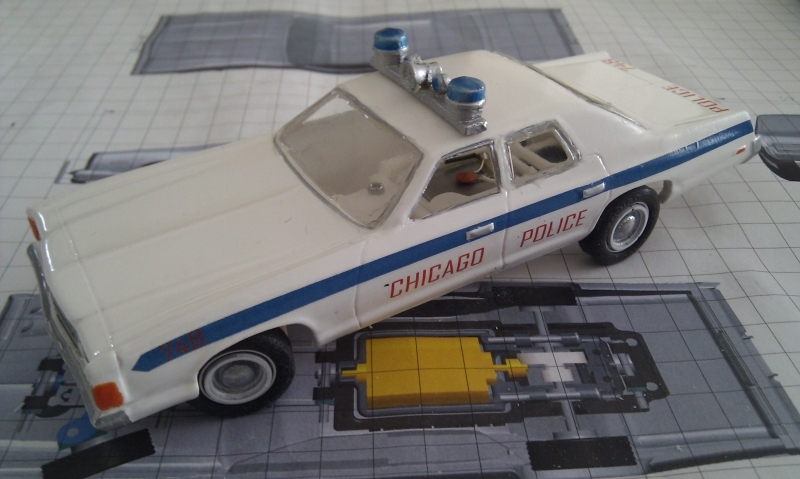
Once the decals are completely dry, apply some clear lacquer to the whole bodyshell to seal the decals and protect the paint. Next fit the windows.
Cut out the vacform windows and carefully glue them in place one at a time using glue that doesn’t bloom when dry. Something like canopy glue, or anything that’s specially made for glueing windows in model kit. If you use normal glue it’ll mist up!
Then cut the interior out, paint and attach the driver and passenger heads on. You might need to file the top of their hats to get the interior high enough but it won’t show when the car is on the track.
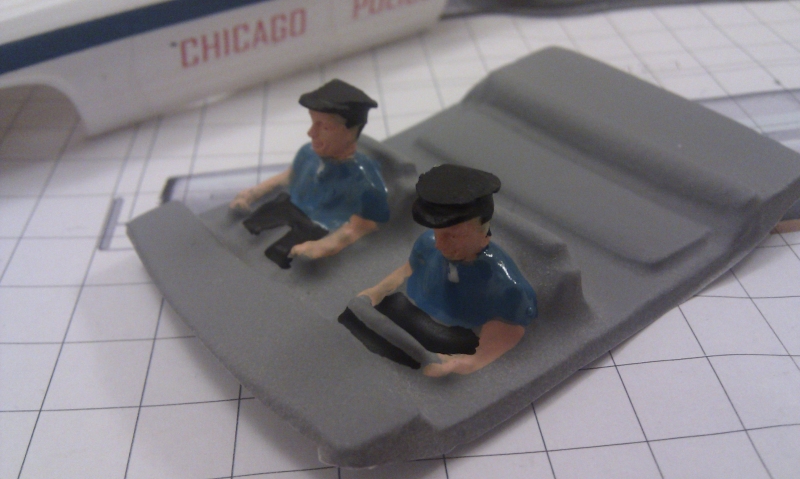
Now get on the track!
